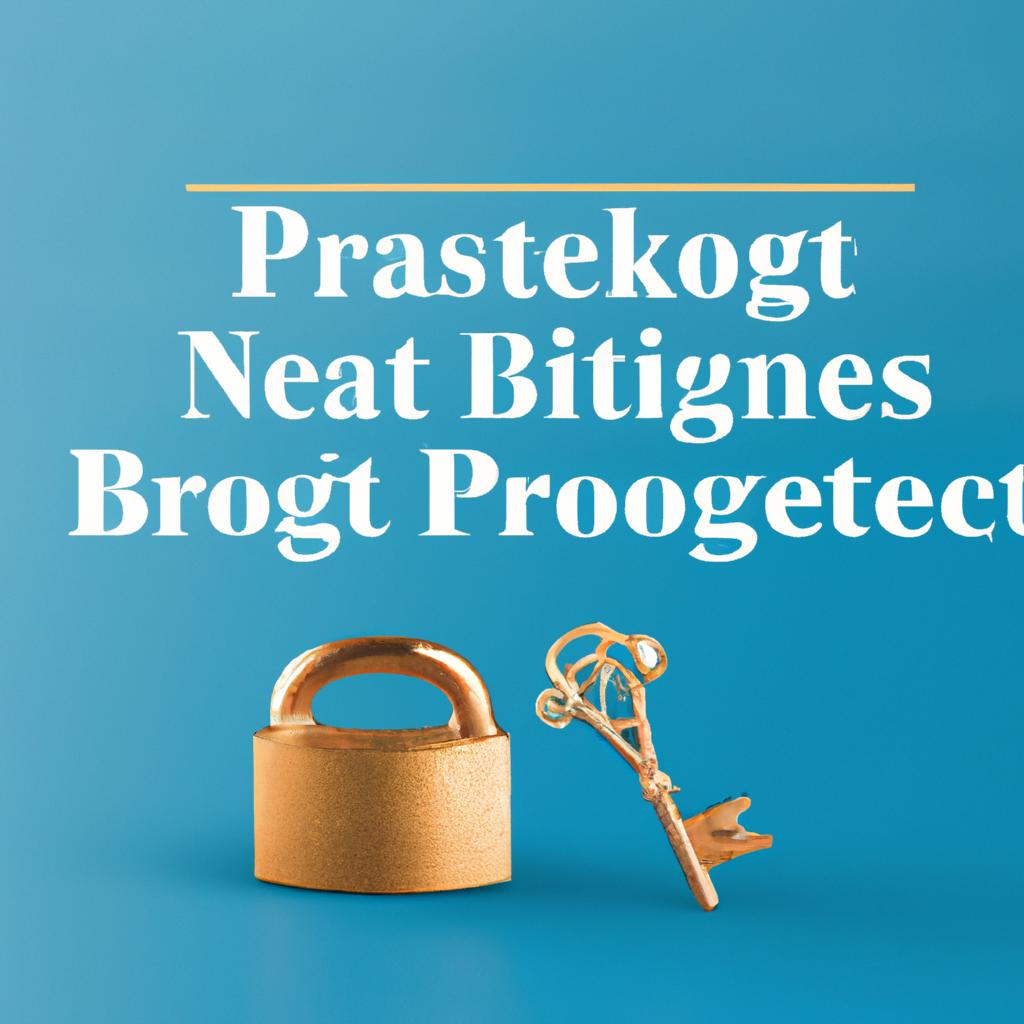When it comes to passing on assets and property after the passing of a loved one, the legal process can often be complex and time-consuming. However, one lesser-known option is nonprobate transfer, which can simplify matters and provide peace of mind for both the deceased and their loved ones. This article will explore the ins and outs of nonprobate transfer, how it works, and the benefits it can offer for estate planning.
Understanding Nonprobate Transfers
Nonprobate transfers are a way for assets to bypass the probate process and go directly to the designated beneficiaries. Understanding how nonprobate transfers work can help individuals ensure their assets are distributed according to their wishes. Here are some key points to consider:
Types of Nonprobate Transfers:
Beneficiary Designations:
Assets with named beneficiaries, such as life insurance policies, retirement accounts, and payable-on-death bank accounts, typically pass outside of probate.
Joint Ownership:
Property owned jointly with rights of survivorship automatically transfers to the surviving owner upon death.
Trusts:
Assets held in a trust can avoid probate as they are managed according to the trust agreement.
When setting up nonprobate transfers, it is important to review and update beneficiary designations regularly. Changes in life circumstances, such as marriage, divorce, or the birth of children, may necessitate adjustments to ensure assets are distributed as intended. Consulting with an estate planning attorney can help individuals navigate the complexities of nonprobate transfers and create a comprehensive estate plan that aligns with their goals and wishes.
Types of Nonprobate Transfers: POD Accounts, Beneficiary Deeds, and Living Trusts
Nonprobate transfers are a valuable estate planning tool that allows assets to pass directly to beneficiaries outside of the probate process. Three common types of nonprobate transfers include POD accounts, beneficiary deeds, and living trusts.
POD Accounts:
A Payable on Death (POD) account is a bank or investment account that has a designated beneficiary. Upon the account holder’s death, the funds in the account automatically transfer to the named beneficiary. This process avoids probate and allows for a quick and seamless transfer of assets.
Beneficiary Deeds:
A beneficiary deed is a legal document that allows real estate to pass directly to a designated beneficiary upon the property owner’s death. By using a beneficiary deed, the property can avoid probate and transfer to the beneficiary without the need for court intervention.
Living Trusts:
A living trust is a legal arrangement in which a trustee holds and manages assets on behalf of a beneficiary. Assets held in a living trust can bypass probate, providing a more efficient and private way to transfer assets after death. Living trusts can also help avoid potential challenges to the estate and protect assets from creditors.
Advantages of Nonprobate Transfers Over Probate
One major advantage of nonprobate transfers over probate is the speed at which assets can be distributed to beneficiaries. In the case of a nonprobate transfer, assets can be transferred directly to the intended recipient without the need for court involvement. This can significantly speed up the transfer process and allow beneficiaries to access their inheritance much sooner than if the assets had to go through probate.
Another advantage of nonprobate transfers is the privacy they afford. Probate proceedings are a matter of public record, which means that anyone can access information about the deceased person’s estate, including the assets included in the estate and who the beneficiaries are. Nonprobate transfers, on the other hand, are typically private transactions that do not become part of the public record, providing more privacy for the parties involved.
Furthermore, nonprobate transfers can often be less expensive than probate proceedings. Probate can be a lengthy and costly process, involving court fees, attorney fees, and other expenses. Nonprobate transfers, on the other hand, can often be completed with minimal cost and paperwork, making them a more cost-effective option for transferring assets to beneficiaries.
Tips for Effectively Utilizing Nonprobate Transfers
Utilizing nonprobate transfers can be a strategic way to efficiently pass assets to beneficiaries outside of the probate process. Here are some tips to help you make the most of nonprobate transfers:
Understand the Different Types of Nonprobate Transfers:
There are several types of nonprobate transfers, including payable-on-death accounts, transfer-on-death securities, life insurance policies, and revocable living trusts. Each type has its own requirements and benefits, so it’s essential to understand the differences and choose the best option for your situation.
Keep Beneficiary Designations Up to Date:
For assets such as retirement accounts and life insurance policies that pass through beneficiary designations, it’s crucial to review and update these designations regularly. Life changes such as marriages, divorces, births, and deaths may necessitate changes to ensure your assets go to the intended recipients.
Coordinate Nonprobate Transfers with Your Overall Estate Plan:
Nonprobate transfers should complement your overall estate plan, not conflict with it. Make sure your beneficiary designations align with the distribution of assets outlined in your will or trust to avoid unintended consequences.
In conclusion, understanding nonprobate transfers is essential for ensuring a smooth and efficient transfer of assets to beneficiaries after death. By utilizing these methods, individuals can avoid the lengthy and often complex probate process, ultimately saving time and money for their loved ones. Consider consulting with a knowledgeable estate planning attorney to determine the best nonprobate transfer options for your specific situation. With proper planning and execution, you can ensure that your assets are distributed according to your wishes with minimal hassle and delays. Thank you for reading!

Unlocking the Benefits of Nonprobate Transfers: A Smart Estate Planning Strategy
The Basics of Nonprobate Transfers
Nonprobate transfers are an essential tool in estate planning that allow assets to pass directly to beneficiaries outside of the probate process. This strategy helps to streamline the transfer of property and assets upon the owner’s passing, saving time and potentially reducing costs associated with probate court proceedings.
Common forms of nonprobate transfers include:
- Joint tenancy with rights of survivorship
- Transfer on death (TOD) or payable on death (POD) designations
- Revocable living trusts
- Life insurance policies with designated beneficiaries
Benefits of Nonprobate Transfers
There are several advantages to incorporating nonprobate transfers into your estate planning strategy:
- Avoiding Probate: Nonprobate transfers allow assets to bypass the probate process, which can be time-consuming and costly.
- Privacy: Since nonprobate transfers do not go through probate court, they are not part of the public record, providing greater privacy for your beneficiaries.
- Minimizing Taxes: By carefully planning nonprobate transfers, you can potentially reduce estate taxes and ensure that more of your assets go to your intended heirs.
- Protection from Creditors: Assets passed through nonprobate transfers are generally protected from creditors seeking to collect debts from the deceased.
Practical Tips for Implementing Nonprobate Transfers
When incorporating nonprobate transfers into your estate planning, consider the following practical tips:
- Consult with an estate planning attorney to create a comprehensive plan tailored to your specific needs and goals.
- Review and update your beneficiary designations regularly, especially after major life events such as marriage, divorce, or the birth of a child.
- Ensure that your nonprobate transfer arrangements align with your overall estate plan and that they complement other planning strategies.
- Educate your beneficiaries about the nonprobate transfer process and provide them with necessary information to facilitate a seamless transfer of assets.
Case Studies: Real-Life Examples of Nonprobate Transfers
Here are a few case studies illustrating the benefits of nonprobate transfers in estate planning:
| Case Study | Scenario | Outcome |
|---|---|---|
| John and Mary’s Joint Tenancy | John and Mary owned a house as joint tenants. When John passed away, Mary automatically became the sole owner of the property. | By utilizing joint tenancy, Mary avoided probate and inherited the property seamlessly. |
| Susan’s Revocable Living Trust | Susan established a revocable living trust to transfer her assets to her children upon her passing. The trust designated specific beneficiaries for each asset. | Upon Susan’s death, her assets were distributed according to the trust’s instructions without the need for probate. |





